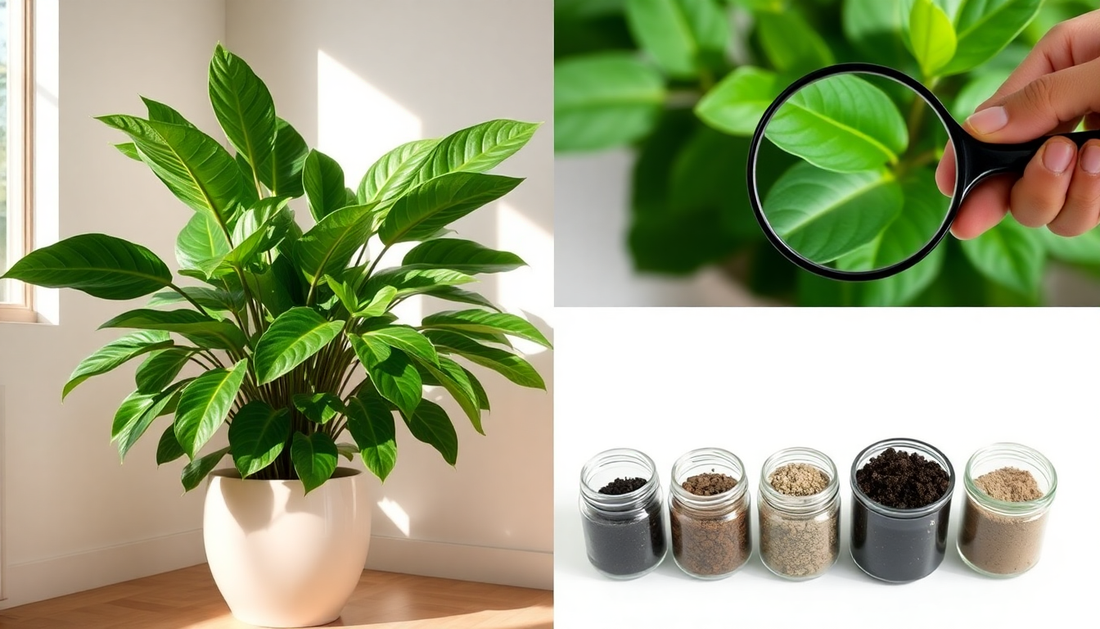
The Ultimate Guide to the Best Soil for Growing Fatsia Japonica Indoors
As an avid indoor gardener, I've always been fascinated by the lush, tropical foliage of the Fatsia japonica, also known as the Japanese Aralia. This stunning plant, with its large, glossy leaves and unique palmate shape, has become a popular choice for adding a touch of the exotic to any indoor space. However, one of the keys to successfully growing a thriving Fatsia japonica indoors is getting the soil right.
In this comprehensive guide, I'll share my expertise on the best soil mix for Fatsia japonica, as well as tips and tricks to ensure your indoor Fatsia plant stays healthy and vibrant. Whether you're a seasoned plant parent or just starting your indoor gardening journey, this post will equip you with the knowledge you need to create the perfect growing environment for your Fatsia japonica.
Understanding the Fatsia Japonica's Soil Needs
The Fatsia japonica is a native of the warm, humid forests of Japan and Taiwan, where it thrives in rich, well-draining soil. When grown indoors, it's essential to mimic these natural growing conditions as closely as possible to ensure the plant's success.
One of the primary considerations when choosing a soil mix for your Fatsia japonica is drainage. These plants are susceptible to root rot if they're left sitting in waterlogged soil, so a well-draining potting mix is a must. Additionally, Fatsia japonica prefers a slightly acidic soil pH, typically between 5.5 and 6.5.
The Best Soil Mix for Fatsia Japonica
After extensive research and experimentation, I've found the perfect soil mix for growing Fatsia japonica indoors. This recipe combines the ideal ingredients to provide the plant with the nutrients, moisture, and aeration it needs to thrive:
Ingredients:
- 40% high-quality potting soil
- 30% peat moss
- 20% compost or well-rotted organic matter
- 10% perlite or coarse sand
To create the mix, simply combine all the ingredients in a large container and mix them thoroughly. This soil blend will provide the Fatsia japonica with the following benefits:
-
Excellent Drainage: The perlite or coarse sand in the mix helps to improve soil drainage, preventing waterlogging and reducing the risk of root rot.
-
Optimal Moisture Retention: The peat moss and compost help to retain moisture, ensuring the plant's roots have access to the water they need without becoming oversaturated.
-
Nutrient-Rich: The potting soil and compost provide a steady supply of essential nutrients to support the Fatsia japonica's growth and development.
-
Slightly Acidic pH: The combination of peat moss and compost helps to maintain the slightly acidic soil pH that the Fatsia japonica prefers.
Preparing the Soil
Before planting your Fatsia japonica, it's important to thoroughly mix the soil components and ensure they are evenly distributed. You can do this by placing the ingredients in a large container or on a clean surface and using your hands or a garden trowel to mix them together.
Once the soil mix is ready, you can either use it to fill a new planter or repot an existing Fatsia japonica plant. Be sure to gently loosen the plant's roots before placing it in the new soil, and water the plant thoroughly after planting to help it settle in.
Maintaining the Soil for Healthy Fatsia Japonica Growth
Proper soil maintenance is crucial for the long-term health and vigor of your Fatsia japonica. Here are some tips to keep the soil in optimal condition:
Watering
Fatsia japonica prefers consistently moist, but not waterlogged, soil. Water the plant when the top inch or two of the soil begins to dry out, being careful not to let the soil become completely dry. Avoid letting the plant sit in standing water, as this can lead to root rot.
Fertilizing
Feed your Fatsia japonica with a balanced, water-soluble fertilizer every two to three months during the growing season (spring and summer). Avoid over-fertilizing, as this can lead to excessive foliage growth at the expense of the plant's overall health.
Repotting
Fatsia japonica plants typically need to be repotted every two to three years, as they can become root-bound over time. When repotting, use the same soil mix recipe and be sure to gently loosen the plant's roots before placing it in the new container.
Soil pH Monitoring
Regularly check the soil pH to ensure it remains in the slightly acidic range (5.5 to 6.5). If the pH starts to drift, you can adjust it by adding a small amount of sulfur or lime to the soil.
By following these soil care guidelines, you'll be well on your way to growing a thriving, lush Fatsia japonica that will be the envy of all your indoor gardening friends.
Conclusion
Achieving the perfect soil mix is the foundation for successful Fatsia japonica cultivation. By using the recipe and tips outlined in this guide, you'll be able to provide your indoor Fatsia with the ideal growing conditions it needs to thrive. Remember, patience and attention to detail are key when it comes to nurturing these beautiful, tropical plants.
Happy gardening!







No comments